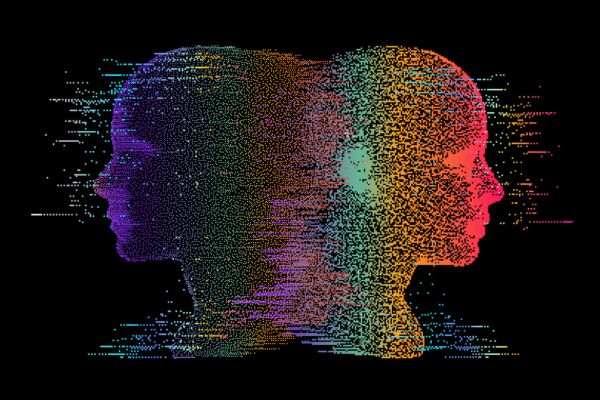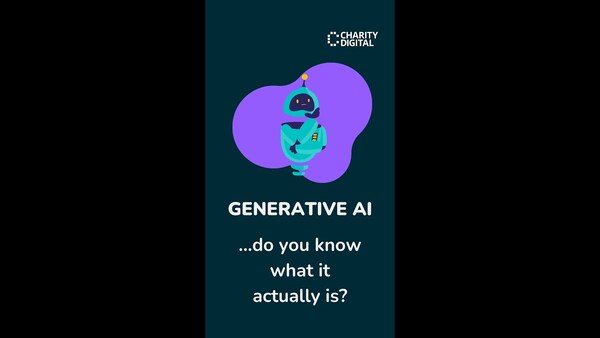Insights
INSIGHTS
All Topics
My Account
Generative AI content: The need for accuracy
09 Aug 2024by Ioan Marc Jones
Generative AI content has become all the rage in the past year. But generative AI presents various risks in terms of accuracy, including the tendency to hallucinate and produce outdated information
Accuracy is particularly important in a world full of inaccuracies. We’ve seen the rise of disinformation and misinformation, claims of fake news by the people delivering fake news, reductions of safeguarding on new media, an entrenched distrust of old media, and so tediously on.
The disinformation age requires that we practice caution. It puts the onus on the individual, not the organisation, to remain cognisant of inaccuracies. It requires us to consume information that, as much as possible, remains factually correct. We should find reputable sources of content, sites that demonstrate a serious and earnest commitment to truth, or at least the pursuit of truth.
And we should certainly aim to produce factually correct information, not to play a role in the spread and substantiation on false information. That poses a problem for the use of generative AI: much of its content is out-of-date, some of it is inaccurate, and a small portion is completely made up.
Below we explore core accuracy issues – and offer advice on how you can avoid them.
Accurate generative AI: The great hallucinations
The problem: Generative AI models often present inaccurate information as though it were correct, often caused by limited information in the system, biases in training data, and issues with the algorithm. These are commonly called ‘hallucinations’ and they present a huge problem.
A famous example was noted by a Guardian journalist. A researcher had come across an article, written by that Guardian journalist a few years previously. But the article proved elusive – there was no sign of it on the internet and the reporter could not remember the piece. It sounded real enough, sounded as though it was something the journalist could have written, but the article was nowhere to be found.
It had not been written. ChatGPT had simply made the entire thing up. That particular example is so fascinating because not only did the initial reader trust the veracity of the article, but so did the proposed writer who did not write it. That’s the core problem with hallucinations: they seem very real.
Hallucinations occur because large language models (LLMs), upon which AI works, are fed huge amounts of information, which is broken down into smaller units, such as letters and words. LLMs use neural networks to work out how words and letter work together, adjusting outputs each time the generative AI system produces predictions. But, importantly, the system never understands the words.
Generative AI grasps grammar rules, word associations, and even develops a form of semantic understanding, but it does not understand concepts. It is pattern matching, in essence, and if incorrect information matches the pattern, the AI may well produce that information. And, importantly, since the AI is often verbose and confident, it will relay that information in a way that is easy to believe.
Hallucinations cause various issues. They can spread misinformation in a particularly pernicious way: unconsciously. The recipient will believe, through little fault of their own, what they’ve read – and they may tell others, even use it in research to spread the misinformation further. They will particularly believe the information if it’s reproduced by trusted organisations that have not fact-checked content.
Hallucinations harm decision-making abilities and threaten reputational harm. They can lead to loss of trust on various levels: at an individual, organisational, or even national level. In short, they threaten accuracy of information, harm reputations, and undermine our belief in the notion of truth.
How to avoid the problem: The first step is to use transparent AI platforms that boast diverse and representative training data. That will minimise the potential for inaccuracies. We’ve said it before, and we’ll say it again, AI systems are only as good as their inputs – use systems with curated inputs.
The second step is to follow-up with AI systems, asking for more accuracy, or more detail on outputs. Generative AI models, such as ChatGPT, will often verify the claims in the content it produces. You’ll need to be specific in the follow-up prompts you use, but that should help to note hallucinations.
Finally, apply the golden rule: meaningful human oversight. Read through the articles and query any information that looks questionable and query all information that possesses the potential to cause harm. You should always substantiate writing – regardless of use of AI – always giving credit to other sources, but using ChatGPT puts a far greater onus on the individual using the platform.
Fact-checking has never been more important. You can check any information against reputable sites, ensuring that the claims generated by the AI are also confirmed in other places. That will depend on using an editorial eye, querying any suspect information, and performing a little fact-finding mission.
You can use a fact-checker to achieve that, rather than manually searching. Some of the best fact checkers on the market include Google Fact Check Explorer, Claimbuster, and Snopes.
Accurate generative AI: Out-of-date information
The problem: Many generative AI systems, particularly text-based ones, depend on older inputs. The free version of ChatGPT, for example, initially depended on data up to September 2021, meaning that for months people relied on outputs that ignored all the information published in the past two years.
It is commonly known as a ‘knowledge cut-off date’ and anything published after that date would not specifically feature in outputs. ChatGPT now uses more up-to-date information, so outputs might not be so outdated, but many platforms still rely on outdated inputs. No generative AI platform uses the most up-to-date information. That’s because the platforms must be pre-trained on inputs and that process is time-consuming. In the time that process takes, generative AI platforms become out-of-date.
In addition, at the time of writing, few platforms have functionality of chronological prioritisation, meaning they are unable to prioritise the latest – and the best – information. So you might get close to the latest information, but it risks inaccuracy, as they may rush through or completely ignore the time needed for human oversight. Or you might get accurate information that is out-of-date.
How to avoid the problem: Meaningful human oversight prevents out-of-date content. You can start by checking the dates of AI inputs, if such information is available. Most systems, at the very least, will tell you their knowledge cut-off date: you may simply ask the system.
We asked ChatGPT 3.5 on 08 November 2023 and we received the following response: “My knowledge was last updated in January 2022. If there have been developments or changes since then, I may not be aware of them.”
Awareness of the knowledge cut-off means you can effectively use (or not use) the information provided, depending on the purpose of the information. You might not want to ask the AI platform about the latest football results. But you might feel confident asking about the French Revolution.
You can then, with adequate awareness, read through the outputs to find anything that looks suspect or raises red flags. You can also fine-tune prompts, depending on the platform, and suggest that it only rely on data from specific dates.
Generative AI is perhaps better positioned for ‘How to’ content rather than dependence for facts and stats. You can easily apply logic to ‘How to’ content, ensuring it makes sense, ensuring the outputs are interesting for your reader. But facts depend on more work, double- and triple-checking, so it might sometimes prove simpler, easier, and more efficient to skip the use of generative AI in that instance.
Presenting facts perpetuates you, the author, as an authority. Depending on outdated, and potentially inaccurate, information presents an ethical issue.
An always important tip: generative AI should not be used for everything. Yes, it can give some great inspiration on ‘How to’ topics and, yes, it can summarise information on given topics in a very effective way.
But if you’re looking for the most up-to-date facts, if you’re formulating moral arguments, or if you’re writing creatively and aiming for originality, generative AI systems might prove a little useless.
More on this topic
Recommended Products
Recommended Products
Our Events
Charity Digital Academy
Our courses aim, in just three hours, to enhance soft skills and hard skills, boost your knowledge of finance and artificial intelligence, and supercharge your digital capabilities. Check out some of the incredible options by clicking here.





















